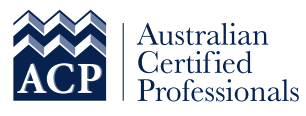Blog
ACP Accountants News

By ACP Team
•
17 Apr, 2024
From 1 April, it's a new fringe benefits tax (FBT) year. If you're an employer and have provided certain benefits to your staff in addition to their salary and wages, it's important to understand how FBT works and what is considered a fringe benefit. Perks that could attract FBT include providing employees with a work car (including dual cab Utes) for private purposes, gym memberships, or tickets to an event or show. If you provided these benefits to your staff, make sure you know how to lodge and pay the FBT. Here's 4 easy steps to help you get your FBT reporting right the first time: Identify the types of fringe benefits you provide Determine the taxable value of each fringe benefit Lodge an FBT return and pay by 21 May (for self-preparers). If your tax professional lodges electronically on your behalf, you have until 25 June Keep good records to support your calculations and FBT position If you don't have an FBT liability for the 2023–24 FBT year and you're registered for FBT, you will need to lodge a completed FBT non-lodgment advice form. If this is your first time lodging through a tax professional, make sure you contact them before 21 May to be added to their FBT client list. This ensures you’re eligible for the June lodgment and payment date. Contact us today – your Sydney small business accountants, or simply call us on 02 80467621.

By ACP Team
•
14 Mar, 2024
The Federal Government recently announced the increases in the standard concessional and non-concessional contributions caps. From 1 July 2024, the standard concessional contribution cap will increase from $27,500 to $30,000. From 1 July 2024, the non-concessional contribution cap, which is expressed as 4 times the standard concessional contribution cap, will also increase from $110,000 to $120,000. This also means that the maximum available, under the non-concessional contribution bring-forward provisions, will increase from $330,000 to $360,000. From 1 July 2024, the Total Superannuation Balance Thresholds used to determine the maximum amount of bring-forward non-concessional contributions available to an individual will also be adjusted. Running your own business and have no time to deal with tax issues? Contact ACP Accountants today on 02 8046 7621, or email us at info@acpaccountants.net.au, and we will take care of your taxation matters as they were our own.

By Alan Law
•
08 May, 2023
The ATO will acquire residential investment property loan data from authorized financial institutions for the 2021-22 through to 2025-26 financial years, including: client identification details (names, addresses, phone numbers, dates of birth, etc); account details (account numbers, BSB's, balances, commencement and end dates, etc); transaction details (transaction date, transaction amount, etc); and property details (addresses, etc). The ATO estimates that records relating to approximately 1.7 million individuals will be obtained each financial year. The principal uses of this data include “education and online services”, “data analytics and insights”, as well as to help the ATO “identify relevant cases for administrative action, including compliance activities”. The ATO has a dedicated webpage dealing with its data-matching protocols (24 in total at the time of writing). It states on this webpage that: “Matching external data with our own helps us to ensure that people and businesses comply with their tax and super obligations. It also helps us to detect fraud against the Commonwealth.”

By Alan Law
•
20 Apr, 2022
From 1 July 2022, you will need to pay super for your employees who are under 18 years old if they work more than 30 hours for you in a week. This is because the $450-per-month threshold for super guarantee is being removed. Employees who are under 18 will be eligible for super if they work more than 30 hours in a week, regardless of how much they’re paid. For example, Jenny is 17 years old and works a 32-hour week once a month at her local hardware store, earning $382 before tax. She also works 6 hours a month as a barista for a cafe down the road. As Jenny works over 30 hours in one week in her job with the hardware store, her hardware employer will need to pay her super from 1 July 2022. As Jenny does not work 30 hours in a week in her job as a barista, she won’t be entitled to super for this work. Likewise, Jenny won't be entitled to super for any weeks she works less than 30 hours for the hardware store. As we move closer to 1 July 2022, check your payroll and accounting systems have been updated so you can correctly calculate your employees' super guarantee payments.

By Alan Law
•
18 Nov, 2021
There are many things to remember when paying superannuation for your employees; but knowing the difference between super guarantee (SG) and the SG charge may just be the most important. The SG charge is an additional amount you'd need to lodge and pay to the ATO if you didn't pay your employees' super: on time by the quarterly due date at the new rate of 10%, or to the right fund (e.g. employee's chosen fund) If any of the above applies to you for quarterly super payments due on 28 October, for example, your organization must lodge a Super guarantee charge statement online by 29 November and pay the SG charge to the ATO. By doing this, you will avoid significant penalties. The way you calculate the SG charge is also different from how much SG you pay to your employees' funds. The SG charge is calculated on an employee's total salary and wages (including overtime and some allowances) and includes interest and an administration fee of $20 per employee, per quarter. For further information about how to calculate your super guarantee charge, please contact ACP Accountants, or the ATO.

By Alan Law
•
03 Nov, 2021
Based on the recent ATO announcement, the Australian Business Registry Services (ABRS) will be introducing and maintaining the Director Identification Number as of 1 November 2021. What is a Director Identification Number? The Director Identification Number (Director ID) is a 15 digit unique identifier that will help prevent the use of false or fraudulent director identities with the new registry services of the ABRS. This will make it easier to trace director relationships across companies and help identify and eliminate involvement in illegal activity such as illegal phoenix activity. What you need to do from 1 November 2021? Individuals who are currently a director or will be acting as a director in the future must apply for a Director ID based on the transitional arrangements specified in the table below: For example: If you become a director on or before 31/10/2021, you must apply for Director ID by 30/11/2021; If you become a director between 1/11/2021 and 4/04/2022, you must apply within 28 days of appointment; From 5/4/2022, you must apply for Director ID before appointment. How do individuals apply online for a Director ID? 1. Go to the ABRS website to access the ABRS Director ID service and learn about the Director ID requirements 2. Verify your identity using your myGovID credentials or create a myGovID using your smartphone and Australian identity documents. For more information visit How to set up myGovID . 3. Conduct a proof of record ownership by answering two questions about the individual's ATO record. See below for further information. 4. Complete a Director ID application on the ABRS platform to receive the Director ID instantly.

By Alan Law
•
21 Apr, 2021
When completing your next business activity statement (BAS), please remember: Keep accurate and complete records of all sales, fees, expenses, wages and other business costs; You can use the ATO Record keeping evaluation tool to help you assess how well you're keeping your business records; Only lodge one BAS for each period. If your form has been replaced, you should use the replacement form and not the original; If you lodge electronically, there's no need to send back the paper form to the ATO; Only complete fields that apply to you. If you have nothing to report, enter zero; Make sure that you have entered the figures for your obligations at the correct label; Enter whole dollar amounts - leave cents out and don't round up to the next dollar; If you have made a mistake, you can revise or fix the mistake on your next BAS; Lodge your BAS by ACP Accountants and you may get an extra two weeks to lodge and pay your BAS. Questions? Contact ACP Accountants, your local Sydney Business Accountants today on 02-8277 4551.

By Alan Law
•
16 Mar, 2021
It's time to review your fringe benefits for the year. The fringe benefits tax (FBT) year ends on 31 March. That means it's time to review benefits you've provided to your employees for the last 12 months and work out which benefits attract FBT. You need to lodge your FBT return by 21 May 2021. Examples of fringe benefits include: • private use of work cars • entertainment (e.g. concert tickets) • reimbursement of employees' expenses (e.g. school fees) • salary sacrifice arrangements Over past year there have been many changes and restrictions due to COVID. To adapt, you may have provided your employees different benefits to those you usually provide, and these may be exempt from FBT. Generally, you do not need to pay FBT for: • items provided to employees to enable them to work from home (e.g. laptop or portable device) • emergency accommodation, food and transport • emergency health care The minor benefits exemption may also apply for minor, infrequent and irregular benefits under $300. Contact ACP Accountants, your Sydney business accountants today.

By Alan Law
•
16 Mar, 2021
Your company is a separate legal entity from you as a director or shareholder. The money your business earns and its assets belong to the company. It’s important to keep appropriate records and correctly report transactions if you use company money or assets. Fox example: • take money out of your company for yourself or your family • receive money from it (for example, as a director, shareholder or an associate) • use your company’s assets for private purposes You may do it through, for example: • salary, wages or director’s fees • repayments of a loan you have previously made to the company • a fringe benefit, such an employee using a company car • dividends • a loan from the company Not correctly reporting and keeping appropriate records for transactions can result in an unfranked deemed dividend being included in your assessable income. If you realize that you’re not correctly reporting these transactions or keeping appropriate records, talk to a registered tax professional and make sure that you correctly report the use of company money or assets in your next tax return. If you have made a mistake or left something out of your previous tax returns, you can lodge an amendment. Contact ACP Accountants today, your Sydney business accountants.
Want more information?

© 2024
ACP Accountants
Latest news

By ACP Team
•
17 Apr, 2024
From 1 April, it's a new fringe benefits tax (FBT) year. If you're an employer and have provided certain benefits to your staff in addition to their salary and wages, it's important to understand how FBT works and what is considered a fringe benefit. Perks that could attract FBT include providing employees with a work car (including dual cab Utes) for private purposes, gym memberships, or tickets to an event or show. If you provided these benefits to your staff, make sure you know how to lodge and pay the FBT. Here's 4 easy steps to help you get your FBT reporting right the first time: Identify the types of fringe benefits you provide Determine the taxable value of each fringe benefit Lodge an FBT return and pay by 21 May (for self-preparers). If your tax professional lodges electronically on your behalf, you have until 25 June Keep good records to support your calculations and FBT position If you don't have an FBT liability for the 2023–24 FBT year and you're registered for FBT, you will need to lodge a completed FBT non-lodgment advice form. If this is your first time lodging through a tax professional, make sure you contact them before 21 May to be added to their FBT client list. This ensures you’re eligible for the June lodgment and payment date. Contact us today – your Sydney small business accountants, or simply call us on 02 80467621.
